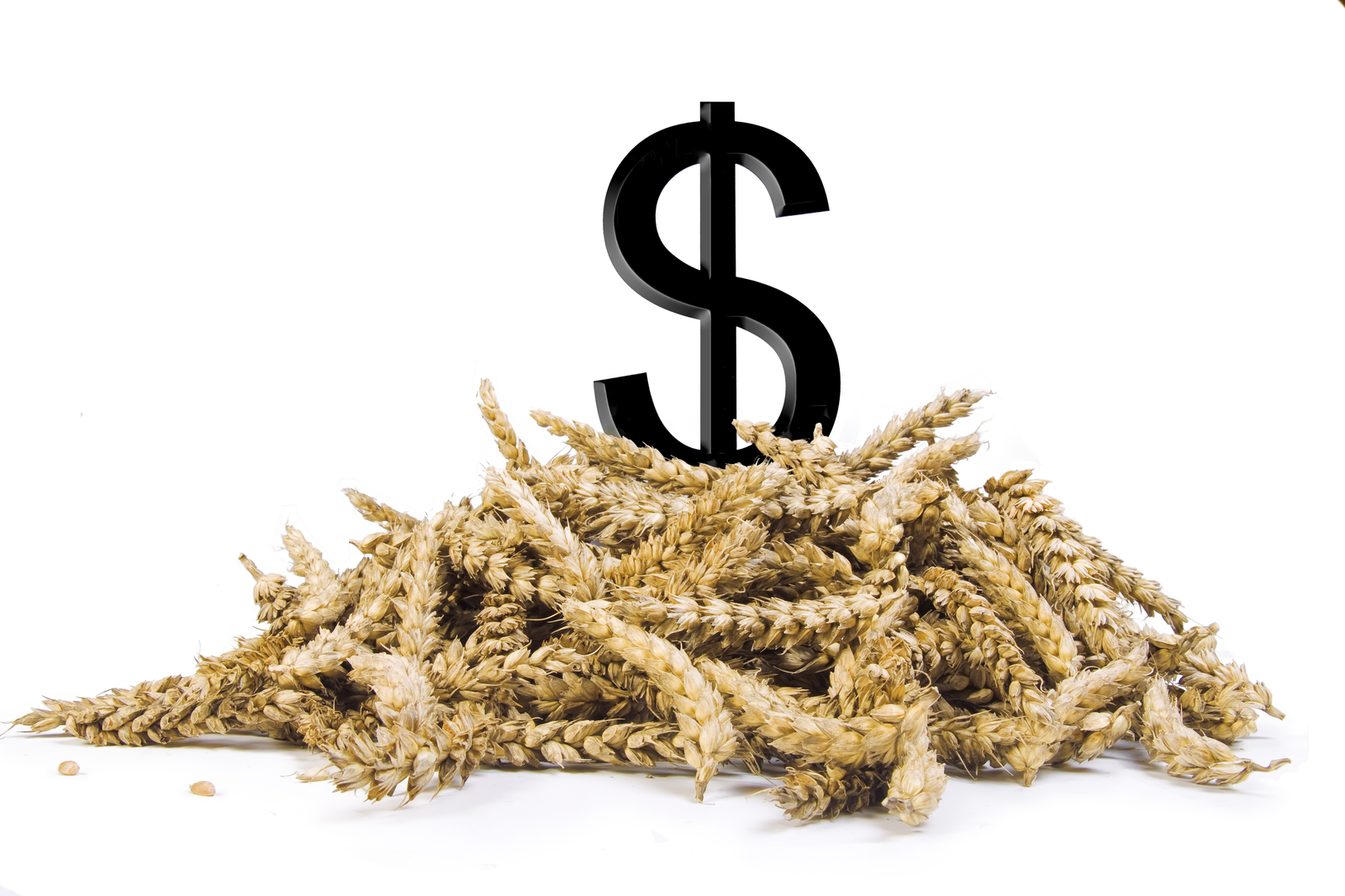Mycotoxins: What does it really cost?

The cost of mycotoxins in animal production for several animal species and production stages have now been made transparent. This allows producers to better predict performance impact in their animals and take steps to protect their profitability.
By Dr Alexandra Weaver, Alltech, Mycotoxin Management
Mycotoxin contamination of feedstuffs is of worldwide concern. Recent analysis* shows that 97.5% of grain samples globally (tested from June – August 2014) contain two or more mycotoxins with an average of 6.7 mycotoxins per sample. The most prevalent mycotoxins, present in over 71% of samples, were the Type B Trichothecenes, Fusaric Acid, and Fumonisins. This simultaneous presence of multiple mycotoxins increases the toxicity to the animal; leading to reductions in performance and/or health status that are often far higher than expected. In order to help producers more accurately predict the effect of mycotoxins on their animals, Alltech’s Mycotoxin Management team have come up with one number; the risk equivalent quantity (REQ). This number represents the overall threat to a particular species’ health and performance based on the cumulative effect of the groups of mycotoxins present. Animals ingest their feed as a combination of multiple ingredients so it is important that when we assess the risks associated with their feed we consider the feed as a whole rather than looking at individual toxins. Analysis* done in pig feed samples (June – August 2014) showed that 7.7 different mycotoxins are present at low to moderate risk levels. This is an increase from the grains alone. The REQ, or cumulative effect of these toxins, reaches high risk as multiple mycotoxins are brought together; and pig producers can expect to see poor performance, digestive disorders, and immune challenges.
However, it is not enough to know only the risk level associated with mycotoxins present. It is also important to understand how these mycotoxins impact animals. Observed symptoms may vary by mycotoxin type and concentration, and often depend on species, animal age, and production level. High concentrations of mycotoxins can result in acute symptoms, but low levels of mycotoxins may have a long term impact on animal performance. Internally, mycotoxins affect the health of organs including the intestinal tract, neurotransmitter or endocrine systems, and immune functions. Together, these effects can result in lower weight gain or altered efficiency, decreased milk production, reproductive failure, or immune challenges. These effects certainly impact animal performance and health, but what does mycotoxin consumption really cost? What if some animals fall behind and take longer to reach market weight? What if fewer eggs hatch, or a dairy cow produces less milk?
Impact on pig performance
Combining data from 10 research trials, nursery pigs (1047 pigs) fed various combinations of mycotoxins at low to high risk levels had a decrease in average daily gain (ADG) by 87.5 g/day (Figure 1). Additionally, feed conversion ratio (FCR) increased by 13 points. Although this average provides some idea of mycotoxin effects on nursery pigs, more valuable information can be gained by breaking these results into risk categories. When the overall mycotoxin concentration, or REQ of the diet was less than 100 ppb, ADG decreased by 6.1%. As the REQ of these research trials increased to 100-200 ppb the ADG dropped by 13.5%, while at REQ values over 200 ppb, the reduction in ADG reached an astonishing 28.4%. Considering these effects on performance, the cost of mycotoxins to pig producers is an estimated average decrease of $6.53/pig (€5.04)during the nursery period. This trend can continue through the grower finisher period to further impact pig performance. For these growing and finishing pigs, ADG was reduced by 8.4% to 15.6% as mycotoxin risks increased, or on average a reduction in gain of 82 g/day. By the end of the finisher period, this decrease in growth resulted in a $7.89/pig (€6.09)loss in net return.
Sows are not exempt from the effects of mycotoxins. When fed through late gestation and lactation, a summary of scientific research shows that litters had 1.13 fewer piglets born alive with a 4.23% increase in the number born dead. Considering the loss of viable piglets, net return per sow may be on average $21.79/litter (€16.83)lower. Additional effects, which cannot be easily accounted for, are those that impact piglets. For example, through the effects of mycotoxins on the sow, the piglets may have a weaker immune system. This can increase the disease susceptibility and the prevalence of illnesses throughout that pig’s life.
Loss of poultry production
The costs of mycotoxins can also be determined for poultry. In broilers, scientific data from 18 research trials (6359 birds) indicated that birds gained 5.41 g/day less with a 12 point increase in FCR (Figure 2) during various mycotoxin challenges. Similar to pigs, mycotoxin concentration and type plays an important role in the effects on performance. At lower to higher risk levels, ADG decreased by 9.3 to 13.3%. What were the costs of mycotoxins on broilers? The impact on profitability is significant, equating to a loss of $0.36/bird (€0.28)on average. Layers and broiler breeders can be further impacted by mycotoxins when considering the effects on egg production and quality. A loss of 1.6 eggs/bird/week and an increase in FCR by 0.38 was observed as a result of mycotoxin consumption. By linking these performance parameters to economics, the net return decreased by $1.05/bird (€0.81). Breeders also show reduced reproductive performance when challenged by mycotoxins. Through an analysis of scientific research, data showed that breeders laid an average 0.6 eggs/week less in contrast to birds fed diets without mycotoxins. Even more troubling was the effect on hatchability, which was lowered 12.9% during these trials. The cause of this decreased hatchability was most likely a result of increased early and late embryonic mortality, in this case 10.1% and 12.8% increases, respectively. Again, these values are important but what does this mean for the producer? In the case of broiler breeders, the effects of mycotoxins resulted in a loss of $0.35/hen/week (€0.27).
Lower milk production
Milk production and cow health can be impacted by mycotoxins even at lower risk levels. Research combined from several trials shows that dairy cows consuming mycotoxins had lower milk production by 2.3 L/cow/day during the trial periods. At the same time, these animals showed altered health status through an increase in somatic cell count (SCC) of 78.5%. Together, these effects on performance and health resulted in a loss of $2.20/cow/day (€1.70). Although cows may not often show acute effects of mycotoxicosis, this loss in milk production can result in thousands of dollars a year in profit losses.
Controlling whole challenge
The use of HACCP based farm and feedmill programmes (such as Alltech MIKO) are advised to monitor and minimise mycotoxin occurrence. Controlling mould growth and mycotoxin production is essential in reducing the risks to animals. Additionally, proven broad spectrum adsorbents** can be valuable in controlling those mycotoxins that do make it into the finished feed. As a result, the cost of mycotoxins can be reduced. Following scientific research, the benefits of using the binder technology** during a mycotoxin challenge has now been linked to REQ and animal performance allowing for a tailored approach to mitigating mycotoxins. Safeguarding the health of your animals starts with the quality of your feed, but effective mycotoxin management is about controlling the whole challenge.
[Source: Managing mycotoxins, 2014]
*Alltech’s 37+™ Program, ** Mycosorb A+®
Author:
Dr Alexandra Weaver, Alltech, Mycotoxin Management











